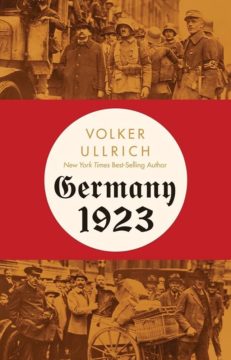Mark Dunbar in The Hedgehog Review:
 Madness in gigantic proportions. That’s how Austrian writer Stefan Zweig described Germany in the 1920s. Between French re-occupation, communist and fascist putsches, regional separatist movements, mass migration from Eastern Europe, and the popular introduction of television and radio, there was also the main event: hyperinflation. After World War I, the dollar-to-mark currency exchange rate was thirteen and a half. Less than five years later, it would reach into the trillions. When you ordered a half-glass of water, so the joke went, it would cost you a hundred thousand marks. By the time it was poured, it would cost two-hundred thousand. And without a stable financial value, all other values—moral, political, artistic—seemed to lose their footing. Vice became indulgence. Reality took on a dream-like quality. In response, the country became a seance. It begged for a voice from the deep to make sense of what was happening. And eventually that voice spoke.
Madness in gigantic proportions. That’s how Austrian writer Stefan Zweig described Germany in the 1920s. Between French re-occupation, communist and fascist putsches, regional separatist movements, mass migration from Eastern Europe, and the popular introduction of television and radio, there was also the main event: hyperinflation. After World War I, the dollar-to-mark currency exchange rate was thirteen and a half. Less than five years later, it would reach into the trillions. When you ordered a half-glass of water, so the joke went, it would cost you a hundred thousand marks. By the time it was poured, it would cost two-hundred thousand. And without a stable financial value, all other values—moral, political, artistic—seemed to lose their footing. Vice became indulgence. Reality took on a dream-like quality. In response, the country became a seance. It begged for a voice from the deep to make sense of what was happening. And eventually that voice spoke.
Germany 1923 by best-selling German historian Volker Ullrich, is about this time period.
More here.
